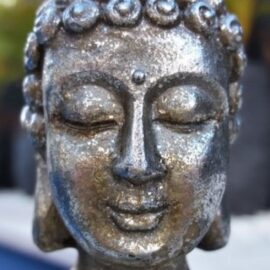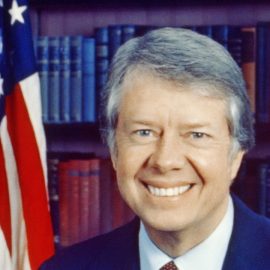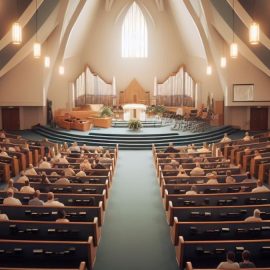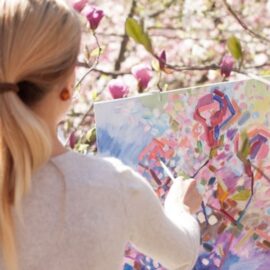
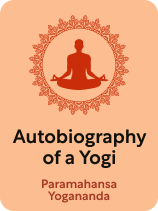
This article is an excerpt from the Shortform book guide to "Autobiography of a Yogi" by Paramahansa Yogananda. Shortform has the world's best summaries and analyses of books you should be reading.
Like this article? Sign up for a free trial here.
Who contributed to the establishment of yoga in America? Who is Paramahansa Yogananda?
Paramahansa Yogananda was a world-renowned yoga practitioner and teacher known for contributing to the adoption of yoga in America, specifically the style of kriya yoga. His goal was to create a spiritual connection between the West and India.
Read on to learn how Yogananda played a key role in bringing kriya yoga to America.
The Origins of Yoga in America: Yogananda’s Story
Autobiography of a Yogi is the memoir of Paramahansa Yogananda, one of the world’s most famous yoga practitioners and teachers. Yogananda is best known for bringing kriya yoga to America, thereby creating a spiritual connection between the West and his homeland of India. In addition to receiving training in kriya yoga, Yogananda earned a Bachelor of Arts degree from Calcutta University in 1915. His mentor Sri Yukteswar Giri had encouraged him to go to university—he’d foreseen that Yogananda would teach yoga in America and said that Westerners would listen more readily to somebody with a degree.
(Shortform note: Calcutta University is consistently rated as one of the best public universities in India, and it often ranks #1 in the country. Holding a degree from such a prestigious university likely gave Yogananda much greater credibility in the Western world, as Yukteswar predicted.)
However, though he did get his degree, Yogananda says that he was always too focused on his spiritual training to study. In fact, he only passed his final exams by a series of seemingly impossible coincidences.
True to Yukteswar’s prediction that Yogananda would teach yoga in America, Yogananda received an invitation to speak at the 1920 meeting of the International Congress of Religious Liberals, held in Boston. Yogananda accepted the invitation and made the trip to America.
During his speech, Yogananda spoke about how God is universal. Therefore, regardless of their specific beliefs and rituals, all who seek God should think of themselves as part of the same religion.
| Yogananda’s First Speech in America Yogananda gives very few details about this speech in Autobiography of a Yogi. However, the Self-Realization Fellowship’s blog provides a brief summary of it. His speech covered three key points. First, he said that religions shouldn’t be separated from each other by dogmatic beliefs and practices. Rather, all religions should be united by the universal understanding that God is bliss, and union with God is the only way to achieve true happiness. Second, Yogananda stated that God must be understood intuitively—through experience—rather than logically. This is crucial because trying to understand something logically means separating yourself from it and trying to learn through observation, while the purpose of religion is to unite with God. Finally, he elaborated that kriya yoga provides concrete, practical techniques for people to understand and unite with God. In short, Yogananda’s speech in America was a distillation of his beliefs and his mission: to bring people of all backgrounds and faiths together with God through kriya yoga. |
Yogananda Fulfills His Destiny
By this time, Yogananda explains, he fully understood the destiny that Lahiri Mahasaya had foretold for him: He would bring yoga to America, becoming a teacher and guide for thousands of people. So, after the Congress of Religious Liberals ended, Yogananda stayed in the US, and California became his home for the rest of his life.
(Shortform note: Although Yogananda officially made his home in California, he spent the next 10 years traveling all over America to give lectures and presentations about yoga. In fact, he spoke at many of the largest auditoriums in the country during this time, and these venues were frequently filled to capacity.)
In 1925, Yogananda founded the headquarters of the Self-Realization Fellowship—a global branch of the YSS—in Los Angeles, California. The headquarters was the second of the three buildings he’d seen in his visions.
Yogananda’s Death in 1952
Yogananda ends his story in 1945, at the end of World War II. He explains that he and the other residents of the Encinitas ashram came together to thank God for bringing peace and pray that the world would never know such strife again. Yogananda looked at the assembled yogis and remarked that he—a monk sworn to celibacy—had been blessed with an enormous family.
Yogananda died in 1952. His funeral service, held in Los Angeles, attracted hundreds of people who came to pay their last respects to the great teacher and spiritual leader.
(Shortform note: Paramahansa Yogananda was buried in Forest Lawn Park in Glendale, California. A report by Forest Lawn’s mortuary director notes that Yogananda’s body had not decayed in the 20 days between his death and burial and that he seemed to be contently smiling even in death. Yogananda’s legacy of bringing yoga to America and as one of the most influential yogis of the modern world lives on through the YSS and the Self-Realization Fellowship.)

———End of Preview———
Like what you just read? Read the rest of the world's best book summary and analysis of Paramahansa Yogananda's "Autobiography of a Yogi" at Shortform.
Here's what you'll find in our full Autobiography of a Yogi summary:
- The memoir of Paramahansa Yogananda, a famous yoga practitioner and teacher
- Practical lessons about yoga, spirituality, and how to live a good life
- An explanation of the Eightfold Path of Yoga

